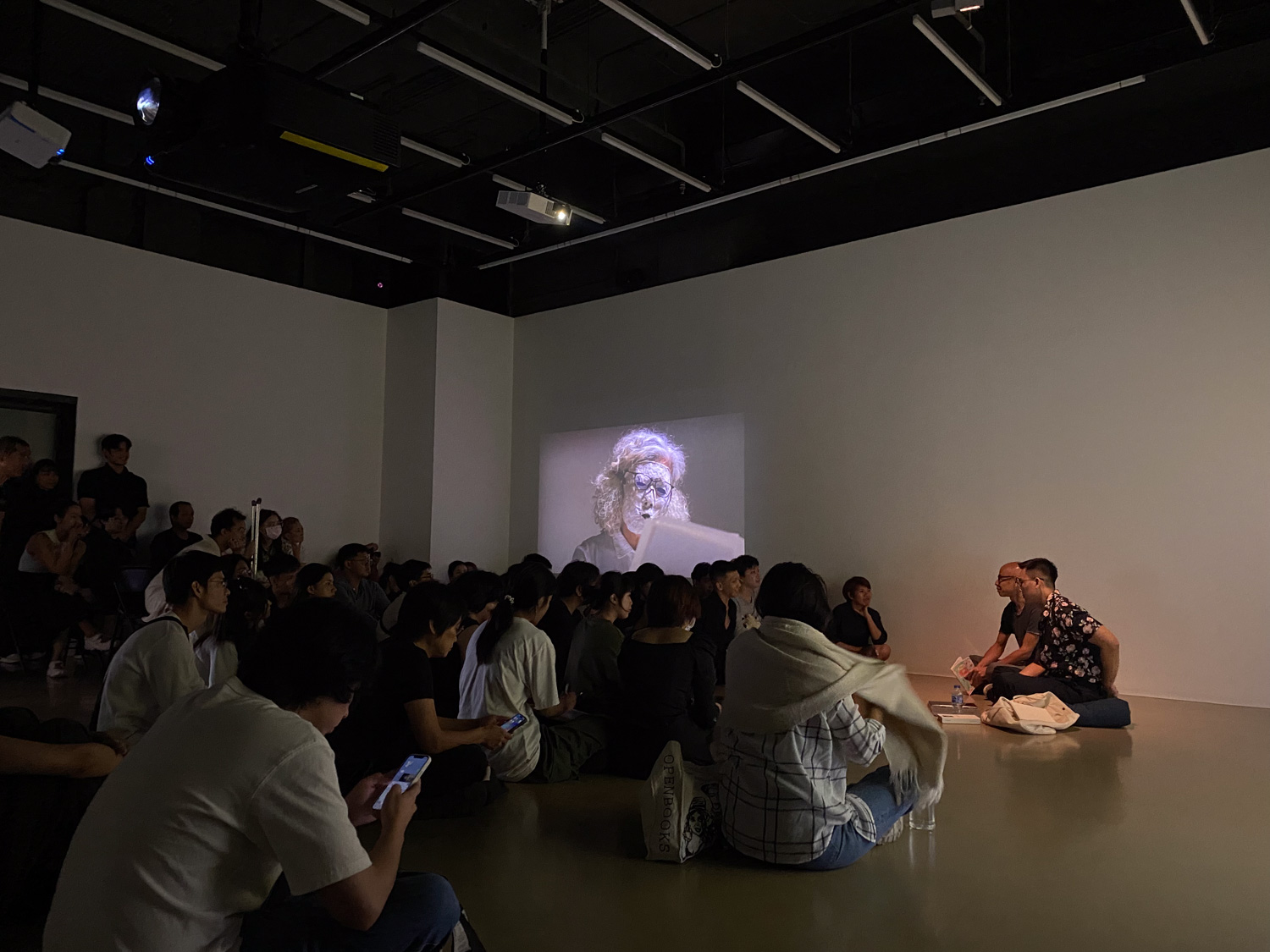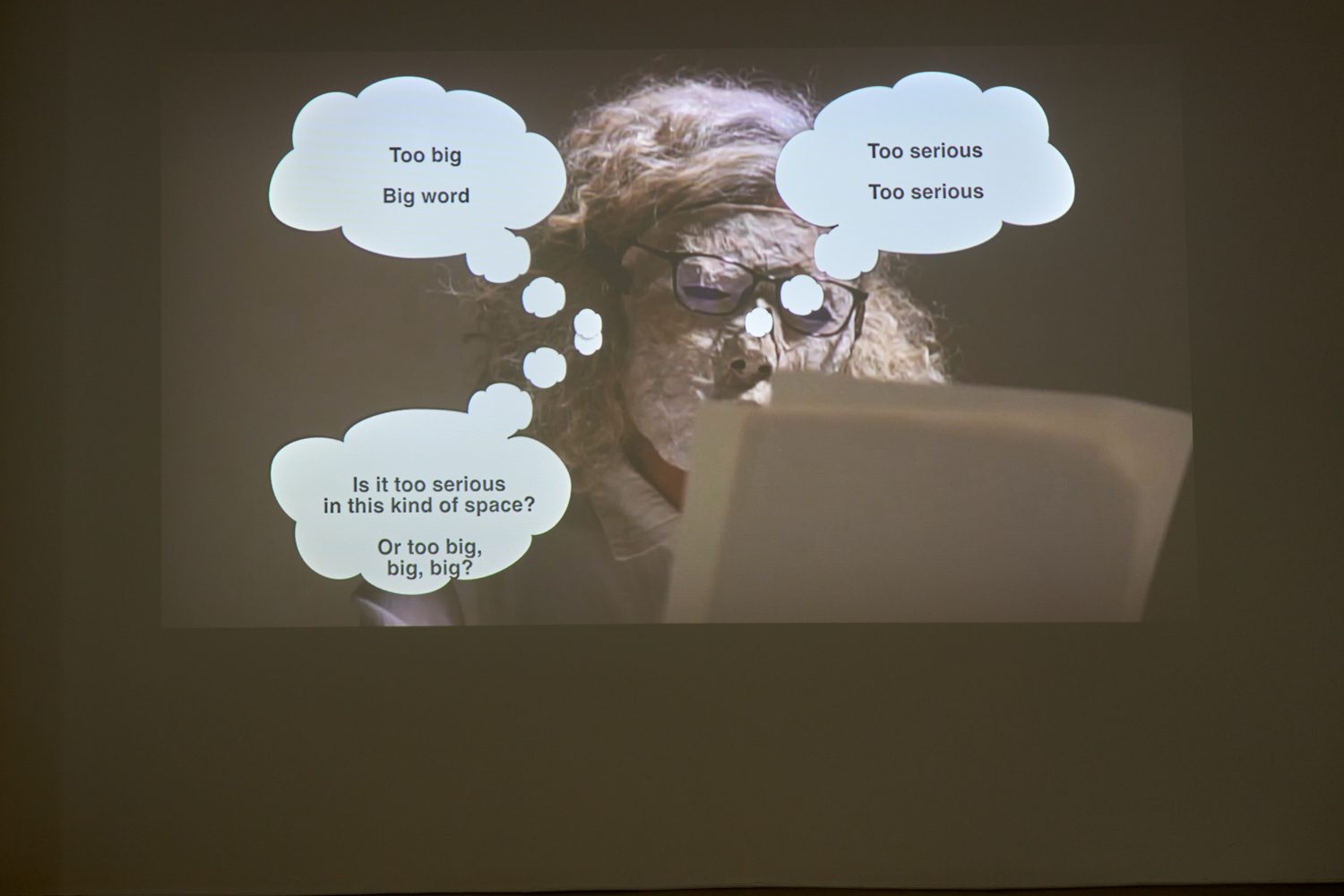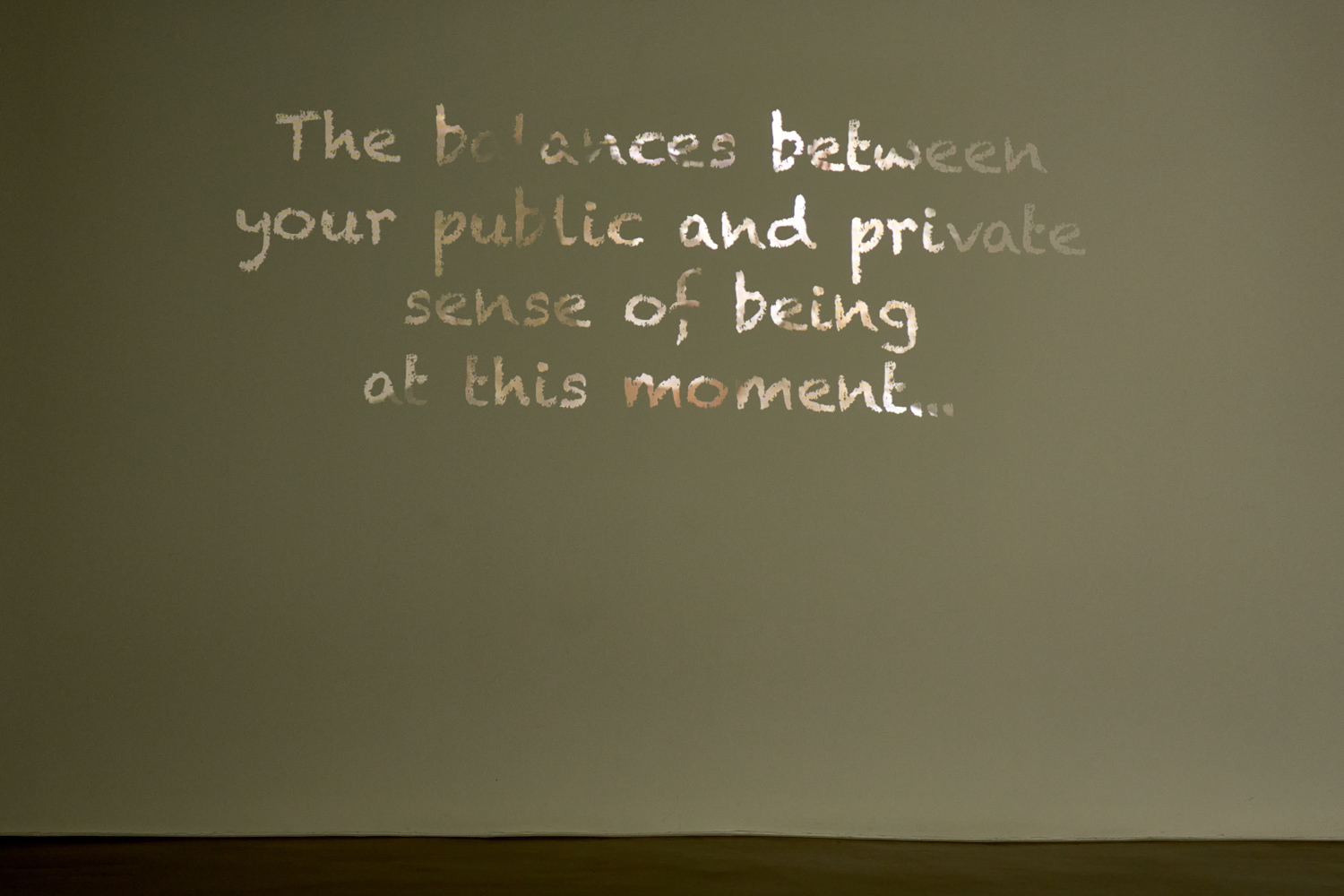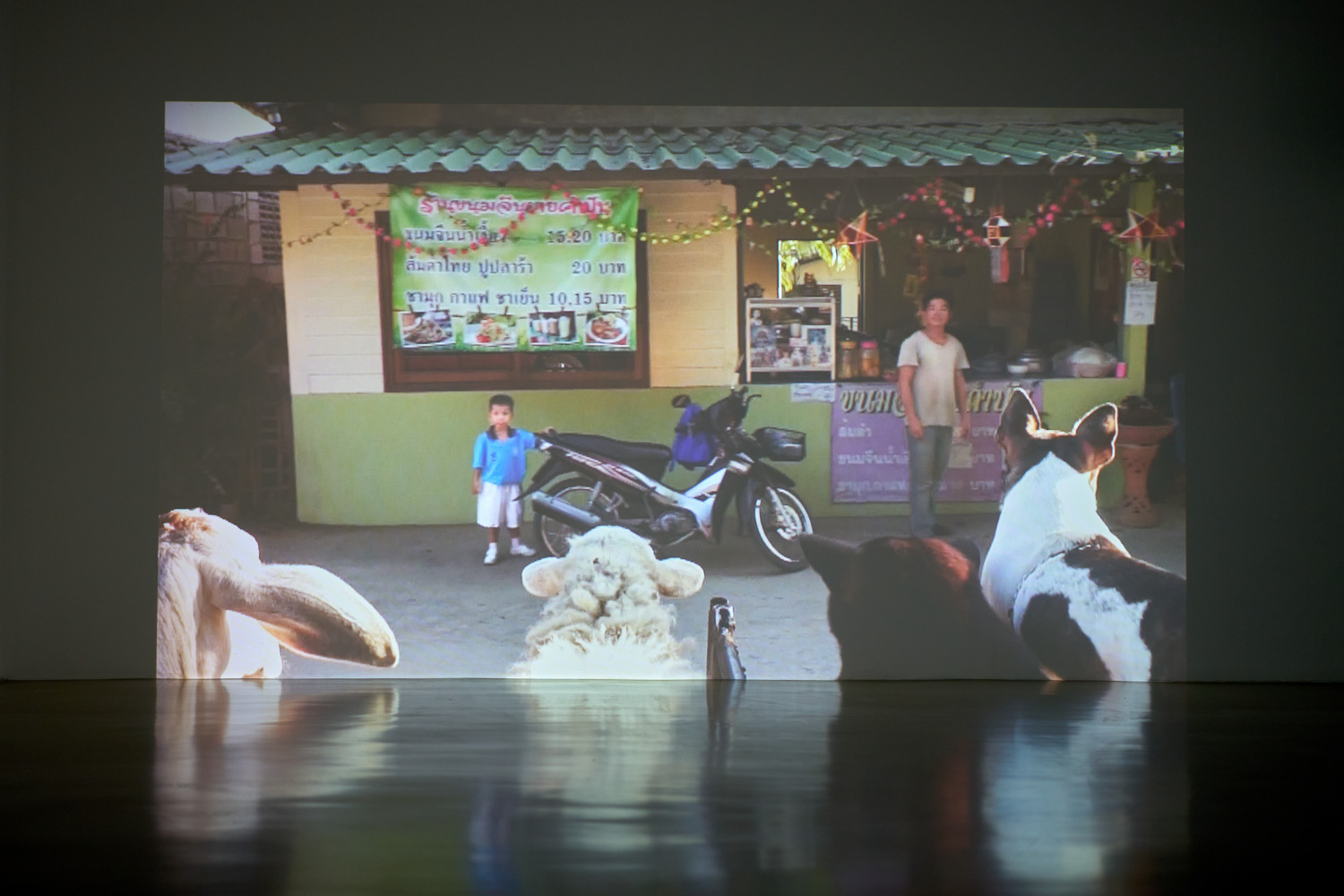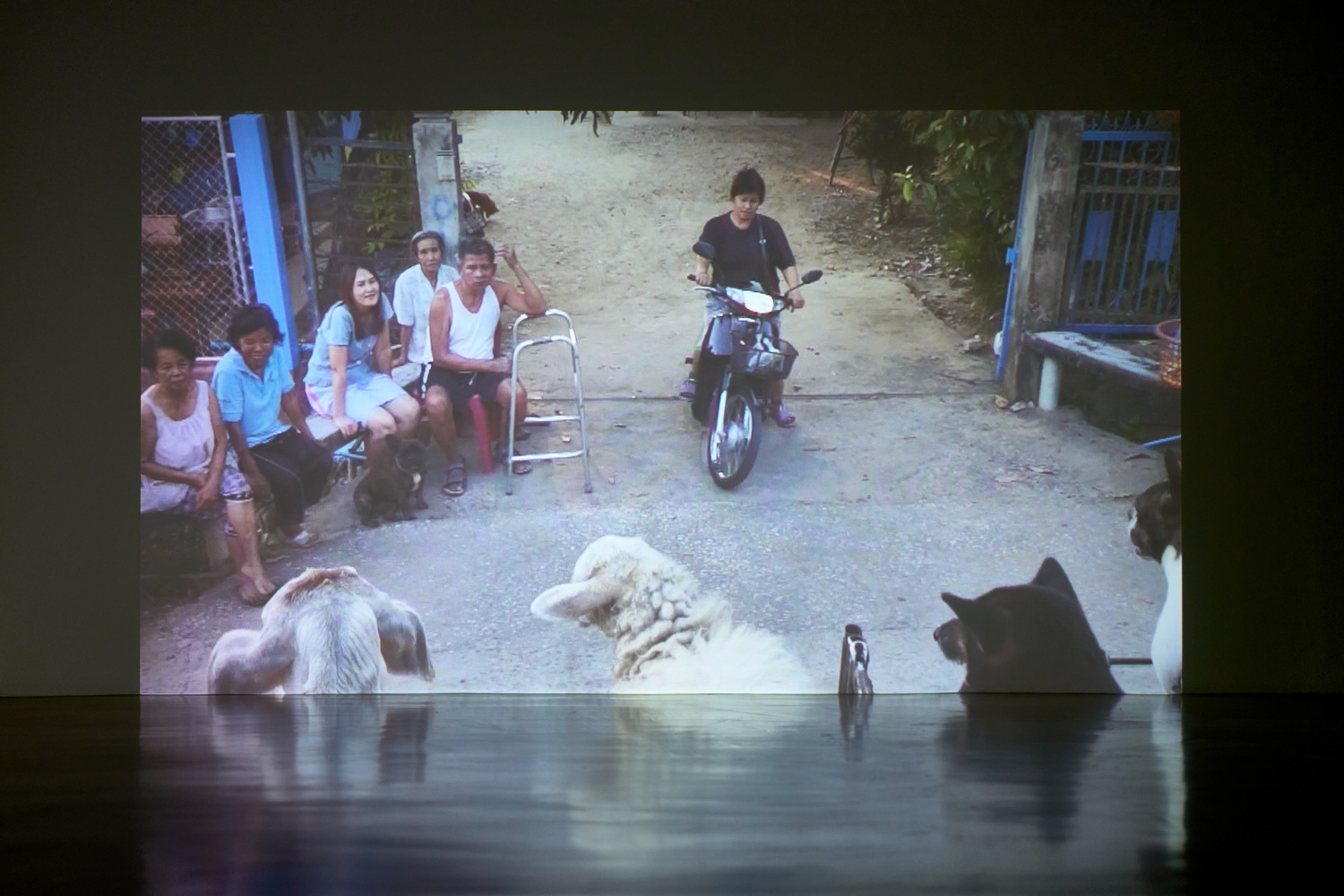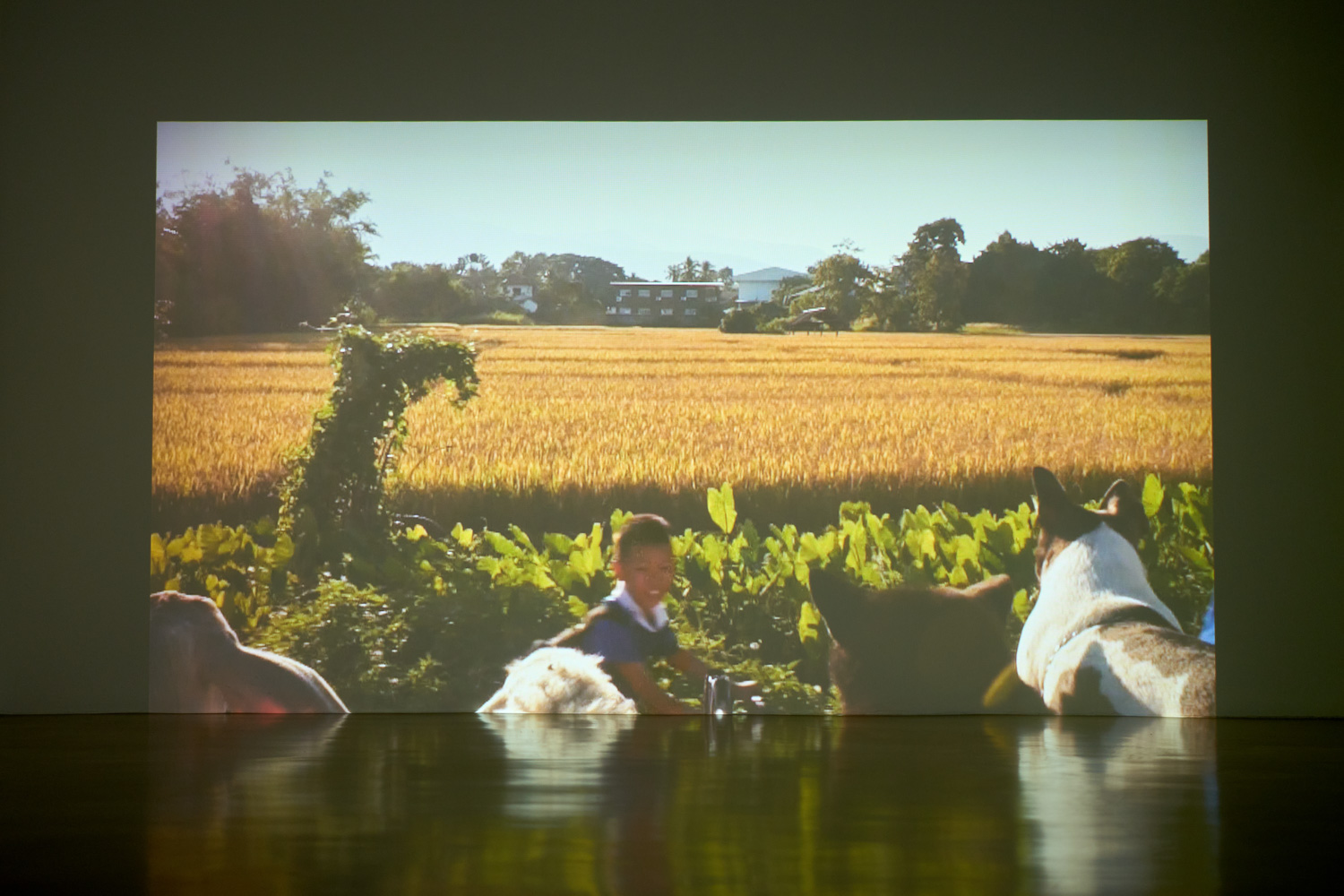THE EXHIBITION BY ARAYA RASDJARMREARNSOOK SHOWCASED THE VIDEO INSTALLATIONS WHICH WERE JUXTAPOSED BETWEEN THE PEOPLE AND THE ANIMALS THAT REPRESENTED HOW DIFFERENT AND SIMILAR WITHIN
TEXT: KANDECH DEELEE
PHOTO COURTESY OF NOVA CONTEMPORARY
(For Thai, press here)
In many instances, our familiarity with the everyday can lead us to overlook deeper relationships. What surrounds us tends to blend into an undifferentiated mass, observed without needing to be explicitly recognized, existing without query. It’s often only the absence of something that triggers our awareness of its prior presence. Even within ecosystems that seem stable and cohesive, as if they were a single entity, a vibrant dynamic of forces is at play. These elements interact, their differences fostering subtle overlaps and boundaries—creating fine vacuums that simultaneously breed alienation and unity, encompassing both home and empire, both dogs and humans.
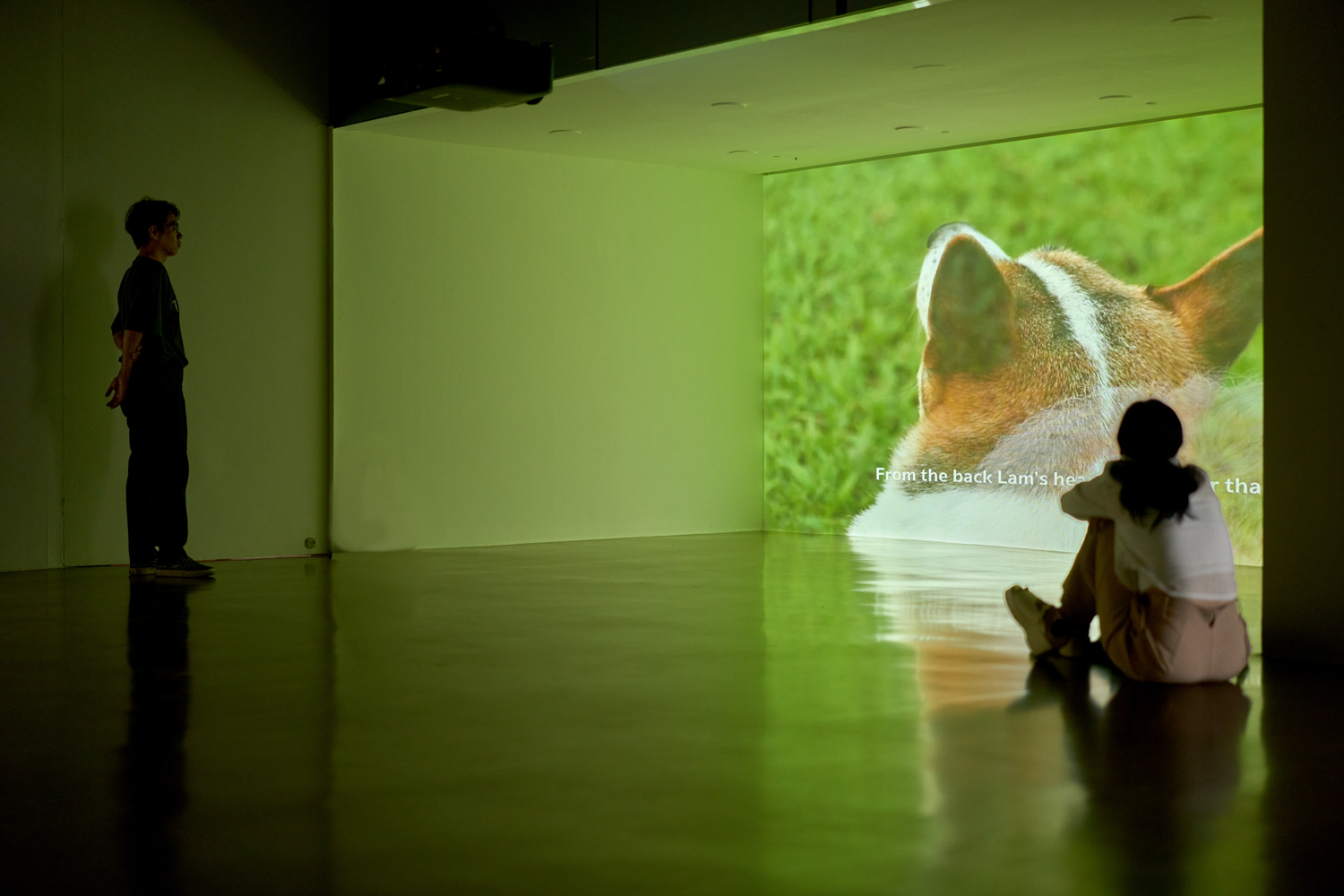
‘ Three Stories from Ban Wang Hma (Dog’s Palatial House)’ is a video art screening by Araya Rasdjarmrearnsook, revolving around the ‘Dog’s Palatial House’ in Chiang Mai, which she built to live with the dogs she has rescued. The exhibition features three interconnected video works that challenge traditional definitions and the comfort of familiarity.

Starting with ‘Necessity’s Rhythm’ (2020), Araya Rasdjarmrearnsook invites us to revisit the connections and relationships of the past. In the video, a masked woman emerges, posing probing questions about the nature of bonds in art—whether they be ancient or contemporary, personal or public, about line or color, concept or form, image or word, art or life, and beyond. These questions, steeped in cliché, which even Araya acknowledges as confining, echo through the work, reiterating familiar themes that circle the world of art like old karma. Moving from one question to another, from one duality to the next, Araya deliberately withholds answers, leaving the space open for the audience to engage. This methodical exploration of art’s dichotomies brings into focus the fluid boundaries of definitions, simultaneously presenting art as both omnipresent and elusive.
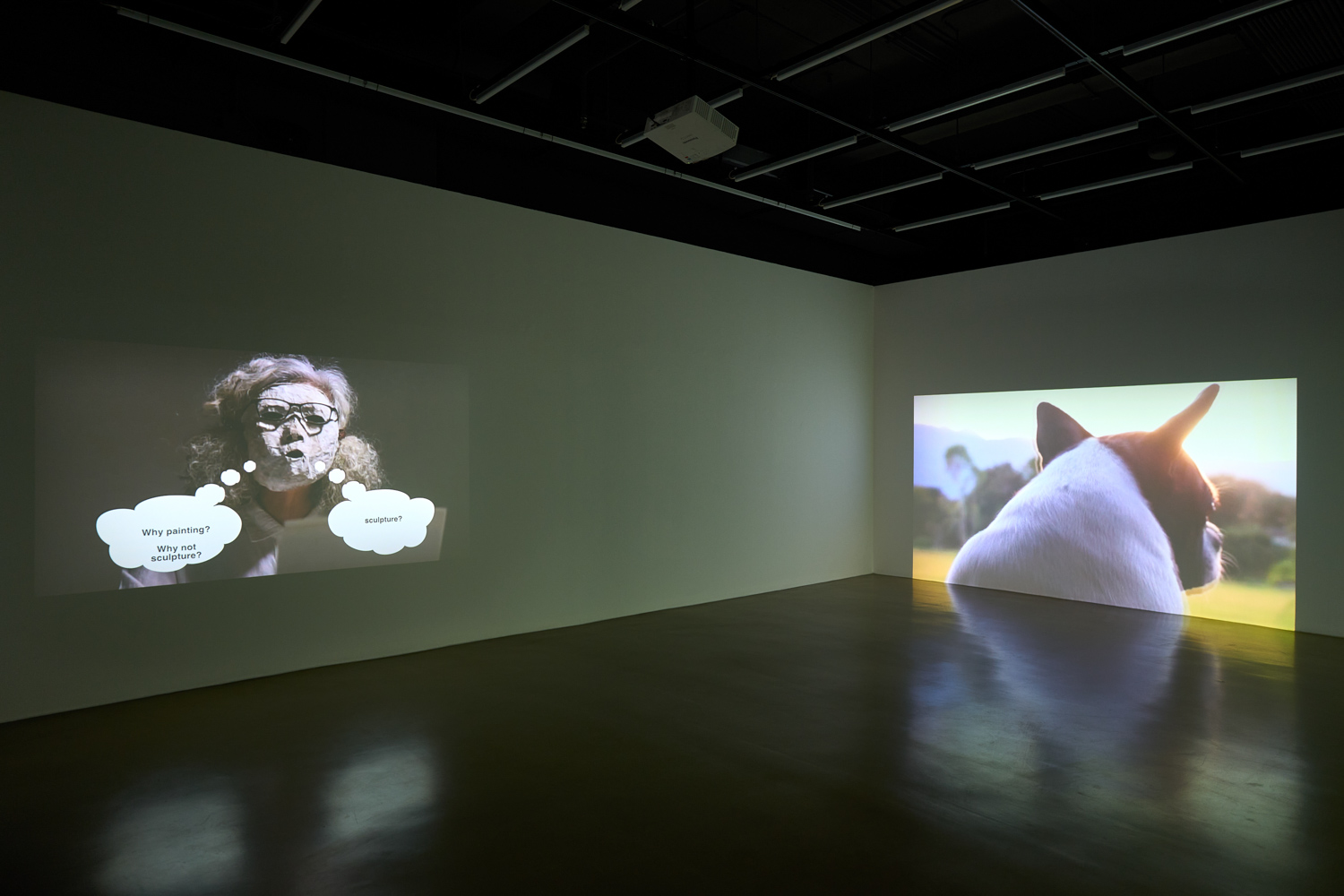
In ‘Jaonua: The Nothingness (Animal Sightseeing Tour)’ (2016), Araya organized an animal tour bus specifically for various kinds of four-legged passengers, who ascend the vehicle’s rear deck to sightsee through towns, markets, temples, fields, and residential areas. Araya ingeniously reversed the roles of the observer and those being observed, transforming it into a reversed zoo tour where animals became the spectators and humans the spectacle. However, she did not simply invert this delicate dynamic with a straightforward role reversal. Instead, she added a layer of complexity by positioning the video’s viewers in the same space as the four-legged creatures. Unknowingly, viewers found themselves standing in a small enclosure, surrounded by diverse species, becoming part of this unique tour group themselves.

This video presents images of overlapping spaces where people, animals, and video viewers, despite existing in different strata and positions, continually alternate between the roles of the observer and those being observed. No one can permanently hold one position; everyone must both embrace and release, grasp and let go. These overlaps in differences, concurrently, forge bonds of similarity. Subsequently, this dynamic prompts us to reconsider the inherent paradox of art: the artist, like the audience, can simultaneously embody the roles of creator, observer, and subject. Moreover, the differences between these roles create a gap that fosters a playground for interaction, introducing variations within a field of similarity and adding another layer of complexity.
In ‘Dog’s Palatial House’ (2022), Araya ventures into the everyday existence of the dogs under her care. She meticulously ‘captures’ the quotidian rhythms of these canines and ‘creates’ narratives from their various activities. Employing a high-pitched, squeaky voice akin to the ‘baby voice’ that many pet owners use to express affection, she brings a unique auditory layer to her storytelling. The video probes the dogs’ enigmatic quest to trace their lineage, exploring how they are haunted by ancestral spirits that seemingly permeate their surroundings—from treetops and kilns to bird statues. Despite their determined efforts, the quest for a tangible link to their ancestors remains elusive. Their connections manifest abstractly, accessible only through dreams, sensations, and uncertainties, or, at their most concrete state, through specific genetic traits evident in their physical forms.

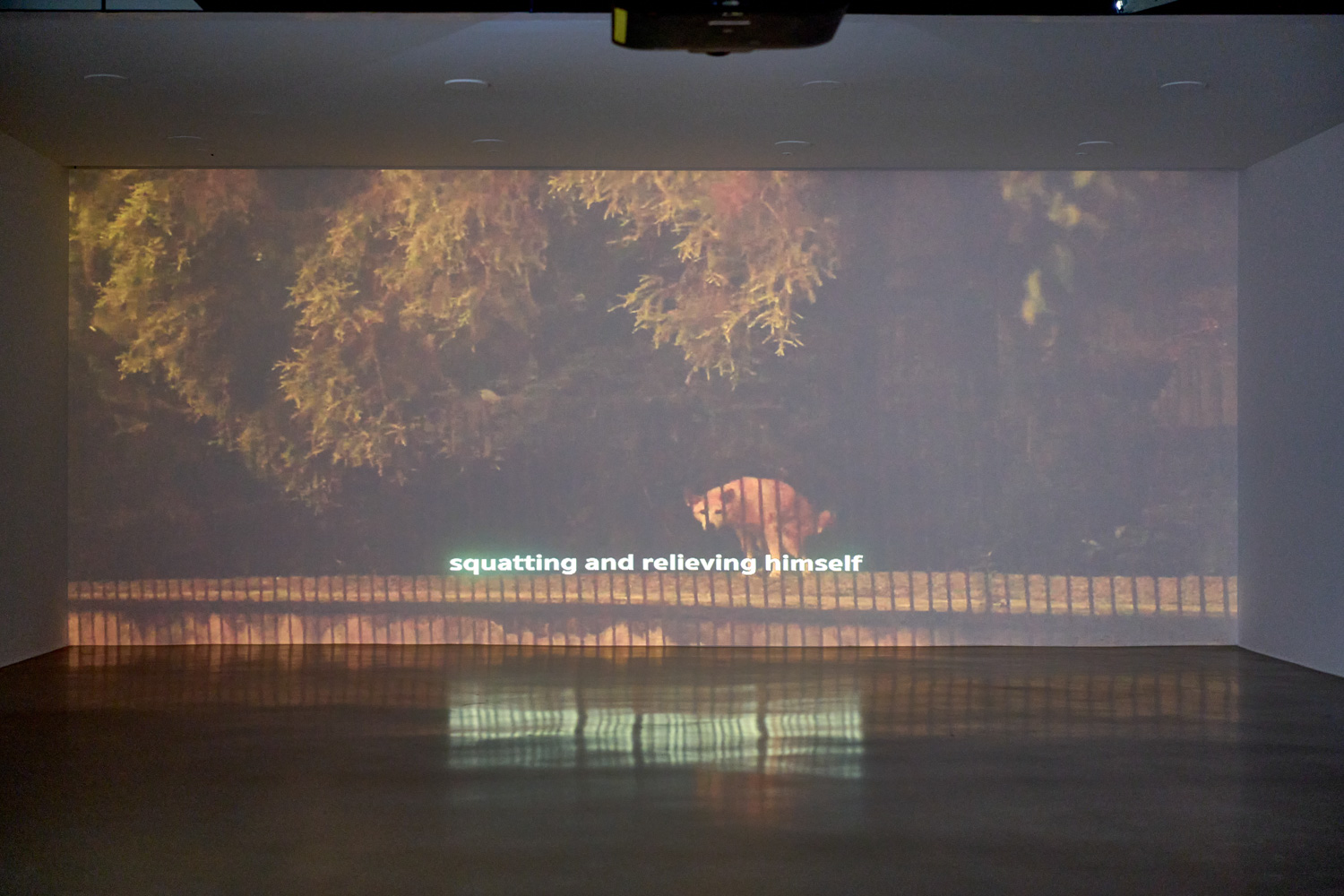
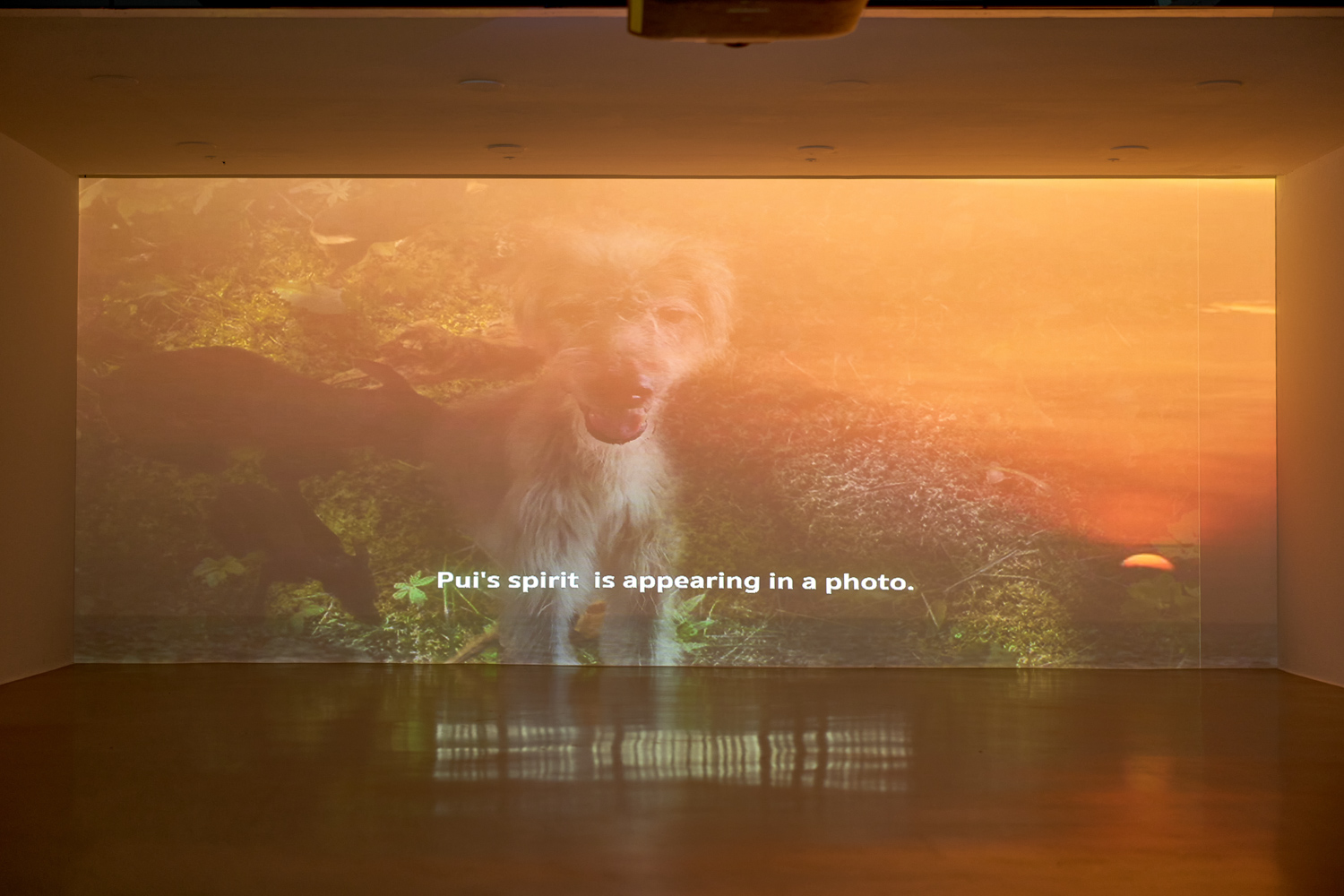
In one sense, the activities of dogs captured in Araya Rasdjarmrearnsook’s work humorously echo human endeavors—from the deep-seated quest to unearth one’s origins to establishing authority through scholarly knowledge, even poking fun at the methodologies of archaeology and historiography. Yet, through these portrayals, Araya illuminates the subtle discrepancies lurking within scenes we deem routine: dogs barking in unison, digging into the earth, or simply resting. These seemingly ordinary actions, presented as mundane, serve as a mirror, challenging our grand human pursuits. In Araya’s lens, dogs and humans coexist in a state of paradoxical similarity—proximate yet distant, familiar yet foreign. This dynamic is yet another exploration of how the familiar can be recontextualized and expanded to embrace the unfamiliar.
What then is the relationship between the meanings of the past and the present?
Or perhaps, does it exist in a state where there both is and is not anything at all?
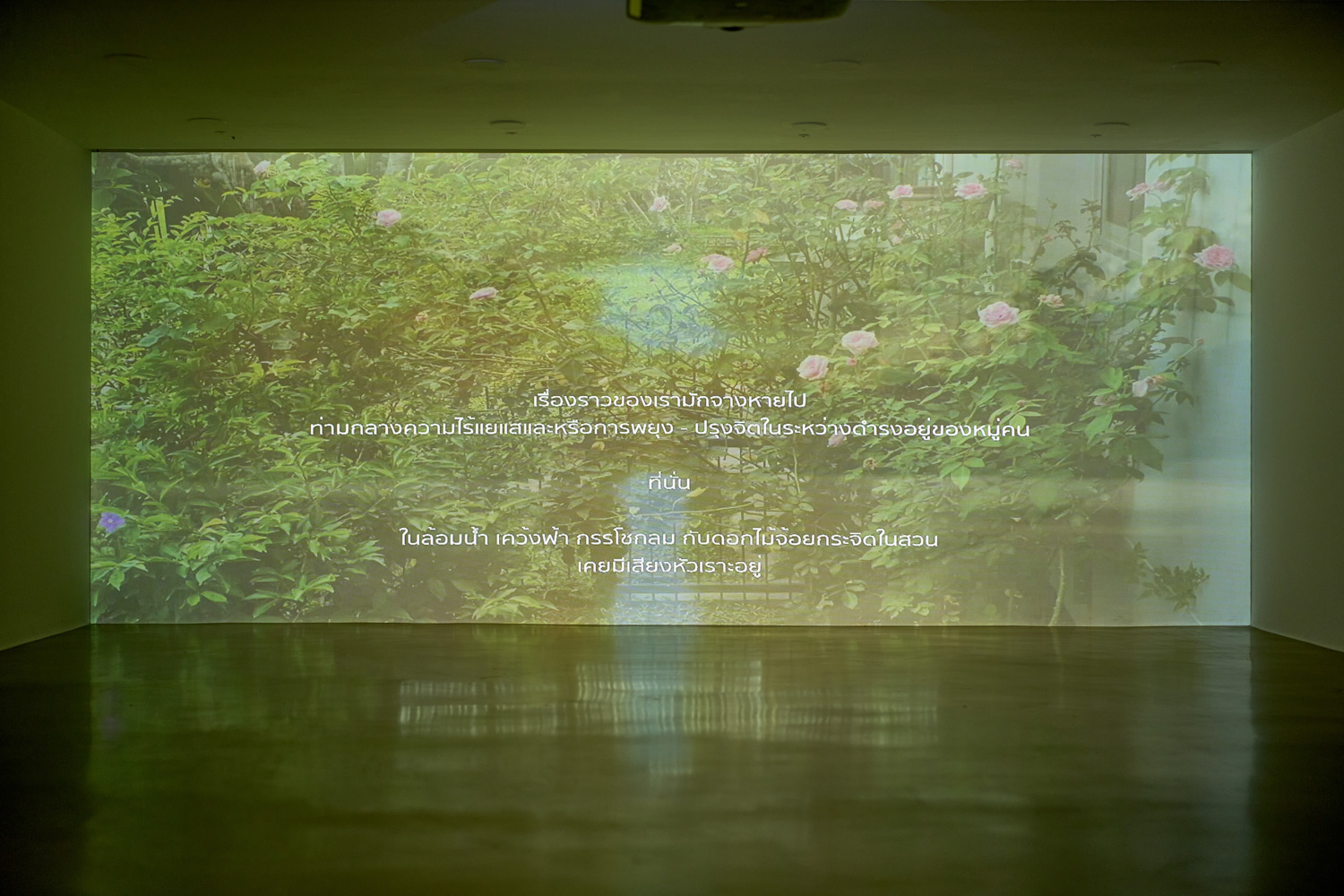
‘ Three Stories from Ban Wang Hma (Dog’s Palatial House)’ by Araya Rasdjarmrearnsook, was exhibited at Nova Contemporary from July 12 -13, 20241
_____________
1 On July 13, Nova Contemporary hosted a seminar titled ‘felt to fail: seemingly slipping, seemingly falling,’ led by Dr. Sayan Daengklom and Assistant Professor Dr. Chairat Polmuk. This session delved into thematic readings of Araya’s latest series from a genealogical perspective, examining its connections to her earlier works. Discussions focused on the interpretative processes that uncover both the possibilities and limitations inherent in the evolution of her artistic works. Additionally, the seminar highlighted comparisons between Araya’s oeuvre and Suwannee Sukontha’s literature, which explores the difficulties and unpredictability of slipping away from humanity, the relationship between humans and animals, and the logic of otherness.
